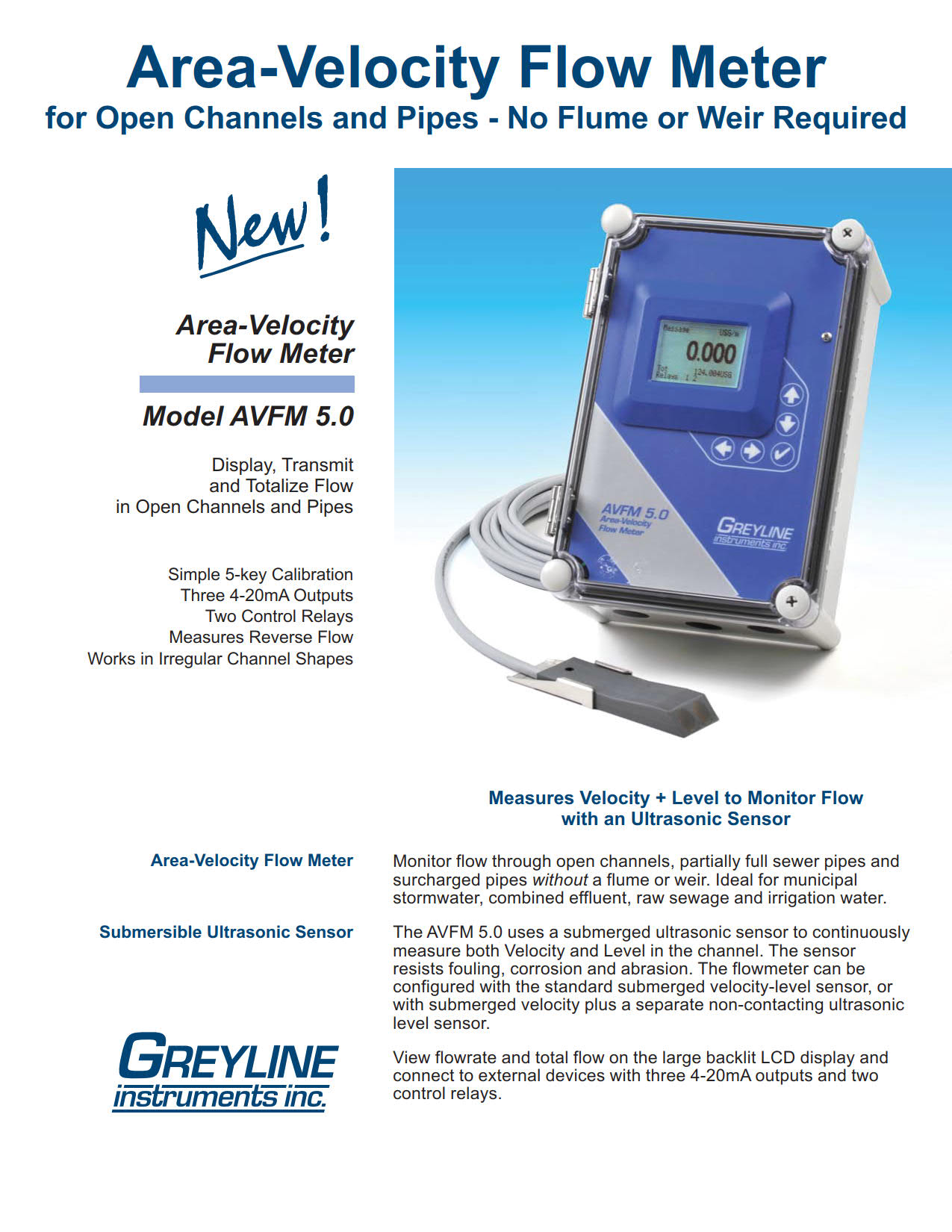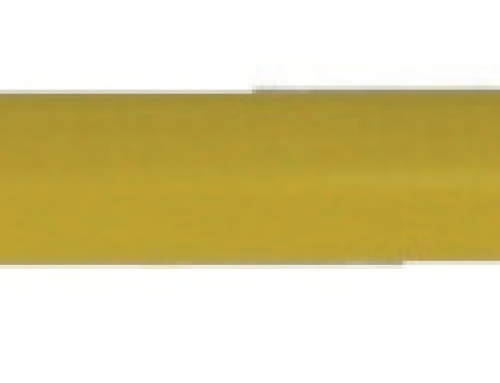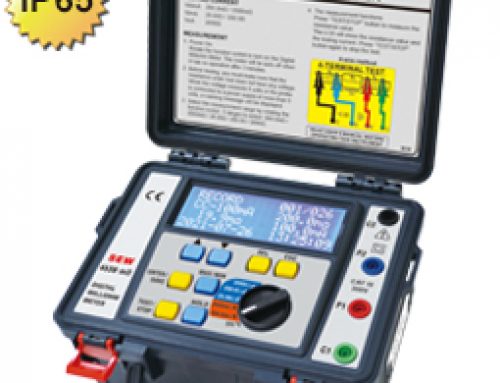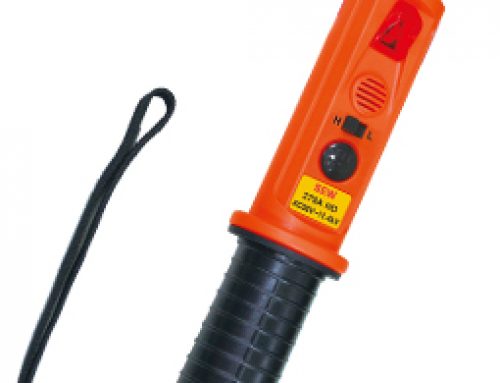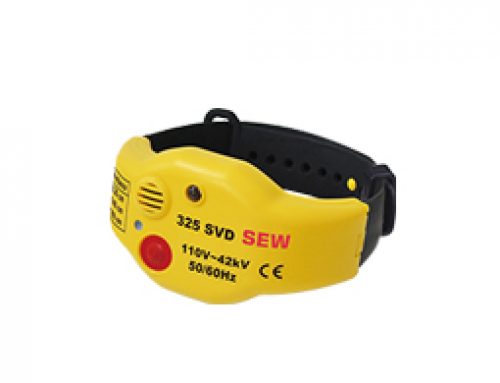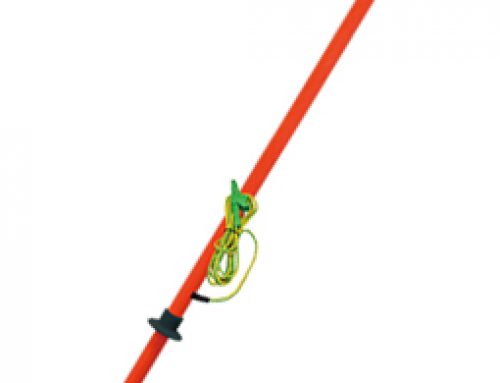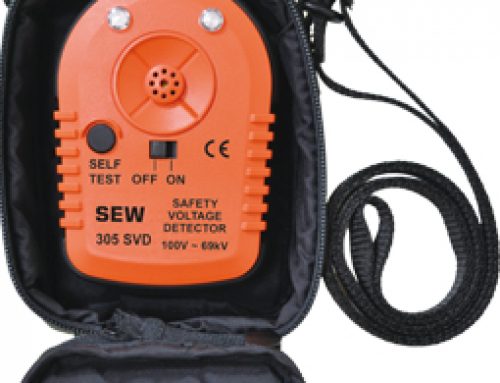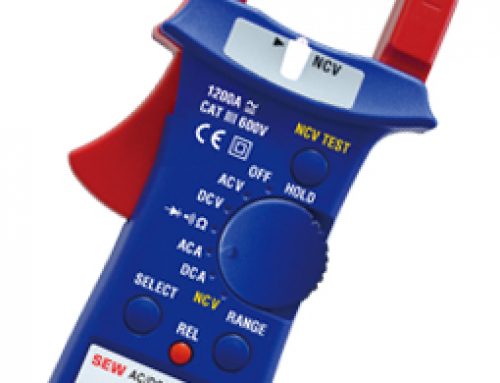AVFM 5.0面积 – 速度流量监视器
- 对于明渠和管道无需水槽或堰
- 超声波 – 测量速度+水平计算流量
- 适用于部分填充和附加费的管道
- 3个隔离的4-20mA输出(流量,电平和速度)
- 隔离4-20mA / 0-5V输出
- 累加器和2个控制继电器
- 可选的本质安全传感器
- 可选的内置200万点数据记录器
AVFM 5.0 Area-Velocity Flow Monitor
- For Open Channels and Pipes No Flume or Weir Required
- Ultrasonic – Measures Velocity + Levelto Calculate Flow
- Works in partially filled and surcharged pipes
- 3 Isolated 4-20mA Outputs(Flow, Level and Velocity)
- Isolated 4-20mA/0-5V Output
- Totalizer and 2 Control Relays
- Optional Intrinsically Safe Sensor
- Optional built-in 2-million point Data Logger
通过明渠,部分完整的下水道管道和没有水槽或堰的附加管道监控流量。适用于雨水,混合污水,未经处理的污水,灌溉用水和溪流。校准很简单:输入管道直径或通道形状,AVFM 5.0计算流量并显示流量。测量正向和反向流量并校准任何形状的通道。
这个怎么运作
AVFM 5.0使用浸没式超声波传感器测量通道中的速度和水平。传感器完全密封,没有孔或端口。它安装在管道内或通道底部。
Monitor flow through open channels, partially full sewer pipes and surcharged pipes without a flume or weir. Ideal for stormwater, combined effluent, raw sewage, irrigation water and streams. Calibration is simple: enter the pipe diameter or channel shape and the AVFM 5.0 computes the flow volume and displays the flow rate. Measure forward and reverse flow and calibrate to channels of any shape.
How It Works
The AVFM 5.0 uses a submerged ultrasonic sensor to measure both Velocity and Level in the channel. The sensor is completely sealed with no orifices or ports. It mounts inside a pipe or at the bottom of a channel.
区域速度流量监测器规范
范围:本规范涵盖由Greyline Instruments,Largo,Florida/Long Sault,Ontario制造的超声波区域速度流量监测器。
仪表应提供通过部分填充或过量的圆管和矩形、梯形、蛋形或不规则形状的明渠指示、传输和合计流量的装置。
A.通用
流量监测器由一个潜水超声波传感器、连接电缆和带有指示、传输和控制电子设备的远程外壳组成。
系统应无活动部件。
液位测量精度应为量程的±0.25%。
速度测量精度应为读数的±2%。
B.传送器(传感器)
超声波传感器的额定值应为IP68,用于连续浸入液体中。
利用多普勒原理,传感器应测量0.1至20 ft/sec(0.03至6.2 m/sec)的流体速度,并反向流动至-5 ft/sec(-1.5 m/sec)。
利用超声波回声测距原理,水下传感器应测量1“至15 ft.(25.4 m m至4.57 m)的液位。
液位传感电路应包括用于自动温度补偿的温度传感器。
传感器应由316不锈钢和环氧树脂制成。
传感器工作温度应为5°F至150°F(-15°C至65°C)。
应包括制造商推荐的不锈钢传感器安装支架。
C.传感器
连接电缆
提供最小长度为25英尺(7.6米)的三同轴电缆,并将其封装在传感器头上。
传感器电缆应防水和电屏蔽。外露材料应仅为聚氨酯。
延长的传感器电缆应为屏蔽三同轴电缆,最大长度为500英尺(152米)。
电缆应采用制造商推荐的NEMA4钢接线盒中的螺纹终端连接进行拼接。
D.发射机
变送器
应提供任何形状的圆管和明渠的现场校准。
应通过内置5键校准系统进行校准,并选择参数菜单。
不接受通过参数代码、BCD开关或外部校准器进行校准的系统。
校准数据应受到密码保护,并通过断电永久存储至少12个月。
现场校准应允许选择和自动转换测量单位、测量范围、高/低流量报警继电器和流量比例继电器脉冲速率。
变送器应允许现场可编程阻尼在湍流条件下平稳输出。
变送器工作温度应为-5°至140°F(-20°至60°C)。
变送器应包含一个恒温控制的外壳加热器,用于30°F(-1°C)以下的冷凝保护。
变送器应具有三个隔离的4-20mA输出,额定最大负载为1000 ohm,可选择菜单0-5 Vdc替代。
输出应配置为传输水平、速度和流量。
提供两个继电器触点,额定5安培SPDT,可编程,用于远程累加器或取样器的流量比例脉冲、高-低流量、速度和/或液位报警、回波损失报警。
提供一个白色背光矩阵液晶显示器,以用户选择的工程单位显示流量、液位、速度、继电器状态和14位积算器。
显示流量、校准单位、累加器和继电器状态的变送器显示应可见,无需打开盖子。
变送器应安装在壁装式防水NEMA4X(IP66)外壳内,并配有铰链式透明盖。
应包括安装硬件。
应在交流电源输入、传感器和4-20mA输出端对变送器电子设备进行浪涌保护。
变送器电源输入应为100-240VAC 50-60Hz,功耗不超过5.28瓦。
变送器应允许插入式现场安装和自动检测可选附件,包括数据记录器和附加控制继电器。
E.根据需要插入的可选功能
传感器
有单独的,水下多普勒速度传感器,加上非接触式超声波液位传感器安装在液体上方。
多普勒速度传感器的设计应能连续浸入液体中,其额定流速为0.1至20 ft/sec(0.03至6.2 m/sec),反向流速为-5 ft/sec(-1.5 m/sec)。
非接触式超声波液位传感器的测量范围应为8”至12 ft.(203.2 m m至3.66 m),并应包括整体温度补偿。
传感器电缆应为50英尺(15米)的连续长度,并与传感器头进行封装连接。
传感器电缆应为100英尺(30米)的连续长度,并与传感器头进行封装连接。
独立长度的延长传感器电缆应为屏蔽三同轴电缆,最大总长度为500英尺(152米)。
电缆应采用制造商推荐的钢制NEMA4接线盒中的螺纹终端连接进行拼接。
传感器和连接电缆的本质安全等级应为I、II、III级,I、II类,C、D、E、F、G组,用于安装在危险位置。
传感器应安装在制造商的不锈钢安装带上,用于6“至72”(150至1800 mm)的规定管道直径。
数码产品
有一个内置的200万点数据记录器与USB输出到闪存驱动器或大容量存储设备。
数据记录器应支持时间和日期标记的日志记录,并生成格式化的流报告,包括总计、平均值、最小值、最大值和发生次数。
包括用于数据日志绘图和导出的Windows软件。
有一个恒温控制的外壳加热器,用于温度低于冰点时的变送器操作。
使用制造商推荐的外壳防晒霜,以便在阳光直射下安装电子外壳。
变送器电源输入应为9-32Vdc,最小功耗为2.5 W至6.5 W(最大值)。
F.制造商
区域速度流量监测器应为Greyline AVFM 5.0型,保证一年内不会出现材料和工艺缺陷。
规格如有更改,恕不另行通知。如果您在申请中需要更多信息或建议,请联系Greyline。我们可以提供报价,并向贵公司所在地区的Greyline销售代表咨询。
AREA-VELOCITY FLOW MONITOR SPECIFICATIONS
SCOPE: This specification covers an ultrasonic, area-velocity flow monitor as manufactured by Greyline Instruments, Largo, Florida / Long Sault, Ontario. The instrument shall provide for indicating, transmitting, totalizing of the flow rate through partially filled or surcharged round pipes and rectangular, trapezoidal, egg or irregular shaped open channels.
A. GENERAL
Flow Monitor to consist of a submersible ultrasonic sensor, connecting cable, and remote enclosure with indicating, transmitting and controlling electronics. System shall have no moving parts.
Level measurement accuracy shall be ±0.25% of Range. Velocity measurement accuracy shall be ±2% of reading.
B. TRANDUCER (SENSORS)
Ultrasonic sensor shall be rated IP68 for continuous submersion in liquids.
Using the Doppler principle, the sensor shall measure fluid velocities from 0.1 to 20 ft/sec (0.03 to 6.2 m/sec) and reverse flow to -5 ft/sec (-1.5 m/sec).
Using ultrasonic echo-ranging principle, the submerged sensor shall measure liquid level from 1″ to 15 ft. (25.4 mm to 4.57 m).
Level sensing circuitry shall include a temperature sensor for automatic temperature compensation.
Sensor shall be constructed of 316 stainless steel and epoxy resin.
Sensor operating temperature shall be 5°F to 150°F (-15°C to 65°C).
Shall include manufacturer’s recommended stainless steel sensor mounting bracket.
C. SENSOR CONNECTING CABLE
Provide minimum length 25 ft (7.6 m) tri-coaxial cable with potted bond to the Sensor head. Sensor cable shall be waterproof and electrically shielded. Exposed material shall be polyurethane only.
Extended sensor cable shall be shielded tri-coaxial to a maximum length of 500 ft (152m). Cable shall be spliced with screw terminal connections in manufacturer’s recommended steel NEMA4 Junction Box.
D. TRANSMITTER
The transmitter shall provide for field calibration to round pipes and open channels of any shape.
Calibration shall be via built-in 5-key calibration system with menu selection of parameters. Systems requiring calibration by Parameter codes, BCD switches or external calibrators shall not be accepted.
Calibration data shall be password protected and permanently stored through power interruptions for a minimum of 12 months.
Field calibration shall allow selection and automatic conversion of measurement units, measurement span, high/low flow alarm relay and flow proportional relay pulse rates.
Transmitter shall permit field programmable damping to smooth output in turbulent flow conditions.
Transmitter operating temperature shall be from -5° to 140°F (-20° to 60°C). Transmitter shall contain a thermostat-controlled enclosure heater for condensation protection below 30°F (-1°C).
Transmitter shall have three isolated 4-20mA outputs rated for 1000 ohm maximum load with menu-selectable 0-5VDC alternative. Outputs shall be configured to transmit level, velocity and flow.
Provide two relay contacts rated 5 amp SPDT programmable for flow proportionate pulse to a remote totalizer or sampler, high-low flow, velocity and/or level alarm, echo loss alarm.
Provide a white, backlit matrix LCD display indicating flow rate, level, velocity, relay states and 14-digit totalizer in user-selected engineering units.
Transmitter display indicating flow rate, units of calibration, totalizer and relay states shall be visible without opening cover.
Transmitter shall be housed in a wall-mount, watertight NEMA4X (IP66) enclosure with hinged, clear cover. Mounting hardware shall be included.
Transmitter electronics shall be surge protected on AC power input, sensor and 4-20mA outputs.
Transmitter power input shall be 100-240VAC 50-60Hz with power consumption of 5.28 Watts or less.
The transmitter shall permit plug-in field installation and auto-detection of optional accessories including data logger and additional control relays.
E. OPTIONAL FEATURES FOR INSERTION AS REQUIRED
Sensors
Have separate, submerged Doppler velocity sensor, plus a non-contacting ultrasonic level sensor mounted above the liquid. Doppler velocity sensor shall be designed for continuous submersion in liquids and rated for fluid velocities from 0.1 to 20 ft/sec (0.03 to 6.2 m/sec) and reverse flow to -5 ft/sec (-1.5 m/sec). Non-contacting ultrasonic level sensor shall be rated for measurement range from 8″ to 12 ft. (203.2 mm to 3.66 m) and shall include integral temperature compensation.
Sensor cable shall be 50 ft. (15 m) continuous length with potted bond to the Sensor head.
Sensor cable shall be 100 ft. (30 m) continuous length with potted bond to the Sensor head.
Separate length extended sensor cable shall be shielded tri-coaxial to a total maximum length of 500 ft (152m). Cable shall be spliced with screw terminal connections in manufacturers recommended steel NEMA4 Junction Box.
Sensor and connecting cable shall be rated intrinsically safe to Class I,II,III, Div. I,II, Groups C,D,E,F,G for installation in hazardous locations.
Sensor shall mount with manufacturer’s stainless steel mounting band for specified pipe diameter from 6″ to 72″ (150 to 1800 mm).
Electronics
Have a built-in Have a built-in 2 million point Data Logger with USB output to flash drives or mass storage devices. Data logger shall support time and date-stamped logging and generate formatted flow reports including total, average, minimum, maximum and times of occurrence. Include Windows software for data log graphing and export.
Have a thermostat controlled enclosure heater for Transmitter operation at temperatures below freezing.
Have manufacturer’s recommended enclosure sunscreen to permit Electronics enclosure mounting in direct sunlight.
Transmitter power input shall be 9-32VDC with minimum power consumption of 2.5 W to 6.5 W max.
F. MANUFACTURER
Area-Velocity Flow Monitor shall be Greyline Model AVFM 5.0 and warranted against defects in materials and workmanship for one year.
Specifications are subject to change without notice. Please contact Greyline if you need more information or for advice in your application. We can provide quotations and refer you to the Greyline sales representative in your area.
流量计运作原理
仪器电子设备测量从发送声音到回声返回所需的时间。根据空气中的声速,可以高精度计算出液体表面与传感器的准确距离(0.25%范围)。
由于声速受空气温度的影响,灰线超声波液位传感器包括一个内置的温度传感器。水平/距离测量在传感器的整个工作温度范围内自动进行温度补偿。
传感器的位置应使其能清楚地“看到”液体表面,远离梯子、管道或其他障碍物。Greyline建议每10英尺深度距离侧壁1英尺(每3米深度300毫米)。来自搅拌器的假回波(在传感器下扫过)、湍流和波可以被仪器过滤和忽略。
Greyline模型的范围从简单的4-20mA液位指示发送器,到复杂的监控、控制和数据记录模型。返回greyline产品了解级别模型详细信息和规格。有关包括超声波在内的各种液位仪表技术的信息,请参阅废水液位测量技术。
测量管外脏污或充气液体的流量
多普勒效应由奥地利物理学家克里斯蒂安·多普勒于1842年提出。我们每天都能听到多普勒的例子:火车经过时的汽笛声改变音调,或者赛车驶过我们的位置时的排气噪音。
多普勒技术只适用于含有固体或气泡的液体来反射其信号。这些是“困难”的液体,可能会损坏常规流量计:泥浆、污泥、废水、磨料、粘性和腐蚀性化学品。由于传感器安装在管道外部,因此没有压降,也没有流动障碍物。
为了获得很好性能,多普勒传感器应安装在远离湍流产生装置(如弯管和三通)的地方,远离速度增加装置(如控制阀和泵)。典型精度为满刻度的±2%。多普勒仪器包括一个夹式超声波传感器、连接电缆和一个电子外壳,可以安装在附近方便的位置(500英尺/152米范围内)。传感器可以本质安全地额定安装在危险的额定位置。
需要非常精确的定时电路,但当传感器可以安装在流量均匀分布的管段上时,1%的精度非常典型。
由于超声波信号必须穿过管道到达接收传感器,因此流体中不得含有大量气泡或固体(小于2%)。否则高频声音会减弱,太弱,无法穿过管道。应用包括饮用水、冷却水、水/乙二醇溶液、液压油、燃油和化学品。
渡越时间传感器通常工作在1-2兆赫的频率。高频设计通常用于较小的管道,低频设计用于直径达数米的大型管道。
水槽和堰是专门设计的渠道形状,以表征水流。常见的类型有矩形堰、V型槽堰、Parshall水槽和Palmer Bowlus水槽。水槽或堰型的选择取决于应用:流速、渠道形状和水的固体含量。请联系Greyline Instruments以获取有关为您的应用选择合适水槽或堰的建议。
灰线明渠流量计可以通过菜单选择校准到水槽或堰。明渠流量计电子设备使用内部公式计算流量(流量=k h n,其中“k”和“n”为常数,“h”为仪器测量的压头)。通过直接输入“k”和“n”常数,可以对不常见或自定义水槽进行校准。Greyline还提供了一个PC软件程序“find k&n”,用于根据水槽或堰流图开发校准常数。
Greyline明渠流量计包括非接触式超声波传感器、连接电缆和电子外壳,可安装在附近方便的位置(500 ft/152 m内)。传感器可以本质安全地额定安装在危险的额定位置。仪器显示、汇总、传输和控制,有些型号包括数据记录/流量报告系统。
在没有水槽或堰的情况下测量明渠流量。面积速度流量计连续测量水位和流速,以计算明渠或管道中的流量。
超声波传感器安装在管道或通道的底部。为了测量水位,传感器发送超声波脉冲,这些脉冲通过水传播并从液体表面反射出来。仪器精确测量回声返回传感器所需的时间。根据水中声速,测量声级精度为±0.25%。
用连续注入水中的超声多普勒信号测量流速。这种高频声音(640kHz)从悬浮在液体中的颗粒或气泡反射回传感器。如果流体在运动,回声以与流速成比例的变化频率返回。利用该技术,仪器测量流速的精度为±2%。
greyline面积流速流量计工作在部分满管和溢流管、矩形、梯形和蛋形通道中。
可选-单独的液位和速度传感器
一个单独的向下看超声波传感器可用于高充气或湍流应用。它通过将超声波脉冲通过空气传输到液体表面来测量液位,精度为±0.25%。在水位传感器的基础上,采用水下多普勒速度传感器对水位进行测量。
HOW IT WORKS
The instrument electronics measure the time it takes from transmitted sound to return of the echo. With reference to the speed of sound in air, the exact distance of the liquid surface from the sensor can be calculated with high accuracy (±0.25% of maximum range).
Since the speed of sound is affected by air temperature, Greyline ultrasonic level sensors include a built-in temperature sensor. Level/distance measurements are automatically temperature compensated throughout the operating temperature range of the sensor.
The sensor should be positioned so that it has a clear “view” of the liquid surface and away from ladders, pipes or other obstructions. Greyline recommends 1 ft. from the sidewall for every 10 ft. depth (300 mm for every 3 m depth). False echoes from agitators (sweeping under the sensor), turbulence and waves can be filtered and disregarded by the instrument.
Greyline models range from simple 4-20mA level indicating transmitters, to sophisticated monitoring, controlling and data logging models. Return to Greyline Products for Level model details and specifications. For information on a wide range of level instrument technologies including ultrasonics, read Wastewater Level Measurement Techniques.
Doppler flow meters measure flow from outside a pipe with a clamp-on sensor. Greyline Doppler meters continuously transmit high frequency sound (640 kHz) that travels through the pipe wall and into the flowing liquid. Sound is reflected back to the sensor from solids or bubbles in the fluid. If the fluid is in motion, the echoes return at an altered frequency proportionate to flow velocity. Doppler flow meters continuously measure this frequency shift to calculate flow.
Measure Flow of dirty or aerated Liquids from Outside a Pipe
The Doppler effect was first documented in 1842 by Christian Doppler, an Austrian physicist. We hear everyday examples of Doppler: the sound of a train whistle changing pitch as it passes by, or the exhaust noise from a race car as it speeds past our location.
The Doppler technique only works on liquids which contain solids or gas bubbles to reflect its signal. These are “difficult” liquids that may damage regular flow meters: slurries, sludge, wastewater, abrasives, viscous and corrosive chemicals. Because the sensor mounts on the outside of the pipe, there is no pressure drop and no obstruction to flow.
For best performance Doppler sensors should be mounted away from turbulence creating devices like pipe elbows and tees, and away from velocity increasing devices like controlling valves and pumps. Typical accuracy is ±2% of full scale. Doppler instruments include a clamp-on ultrasonic sensor, connecting cable and an electronics enclosure which can be mounted at a convenient location nearby (within 500 ft / 152 m). Sensors can be rated intrinsically safe for mounting in hazardous-rated locations.
Very accurate timing circuits are required but 1% accuracy is quite typical when the transducers can be mounted on a pipe section with evenly distributed flow.
Because the ultrasonic signal must cross the pipe to a receiving transducer, the fluid must not contain a significant concentration of bubbles or solids (less than 2%). Otherwise the high frequency sound will be attenuated and too weak to traverse the pipe. Applications include potable water, cooling water, water/glycol solutions, hydraulic oil, fuel oils and chemicals.
Transit Time transducers typically operate in the 1-2 MHz frequencies. Higher frequency designs are normally used in smaller pipes and lower frequencies for large pipes up to several meters in diameter.
Flumes and weirs are specially designed channel shapes that characterize the flow of water. Common types are Rectangular Weirs, V-Notch Weirs, Parshall flumes and Palmer Bowlus flumes. The choice of flume or weir type depends on the application: flow rate, channel shape and solids content of the water. Contact Greyline Instruments for advice on selection of a suitable flume or weir for your application.
Greyline open channel flow meters can be calibrated to any flume or weir by menu selection. The open channel flow meter electronics use an internal formula to calculate flow rate (Flow = K Hn, where ‘K’ and ‘n’ are constants and ‘H’ is Head as measured by the instrument). Calibration to uncommon or custom flumes can be done by direct entry of ‘K’ and ‘n’ constants. Greyline also offers a PC software program “Find K&n” to develop calibration constants from a flume or weir flow chart.
Greyline open channel flow meters include a non-contacting ultrasonic sensor, connecting cable and an electronics enclosure which can be mounted at a convenient location nearby (within 500 ft / 152 m). Sensors can be rated intrinsically safe for mounting in hazardous-rated locations. The instruments display, totalize, transmit and control, and some models include data logging/flow reporting systems.
Measure open channel flow without a flume or weir An Area-Velocity Flow Meter continuously measures both Level and Velocity to calculate flow volume in an open channel or pipe.
The ultrasonic sensor is installed at the bottom of a pipe or channel. To measure water level the sensor transmits ultrasonic pulses that travel through the water and reflect off the liquid surface. The instrument precisely measures the time it takes for echoes to return to the sensor. Based on the speed of sound in water, the level is measured with accuracy of ±0.25%.
Flow velocity is measured with an ultrasonic Doppler signal continuously injected into the water. This high frequency sound (640 KHz) is reflected back to the sensor from particles or bubbles suspended in the liquid. If the fluid is in motion, the echoes return at an altered frequency proportionate to flow velocity. With this technique the instrument measures flow velocity with accuracy of ±2%.
Greyline Area-Velocity Flow Meters work in partially full and surcharged pipes, rectangular, trapezoid and egg-shaped channels.
Optional – Separate Level and Velocity Sensors
A separate down-looking ultrasonic sensor can be used for highly aerated or turbulent flow applications. It measures level by transmitting ultrasonic pulses through the air to the liquid surface with accuracy of ±0.25%. Along with the level sensor, a submerged Doppler velocity sensor is used to measure the water velocity.







